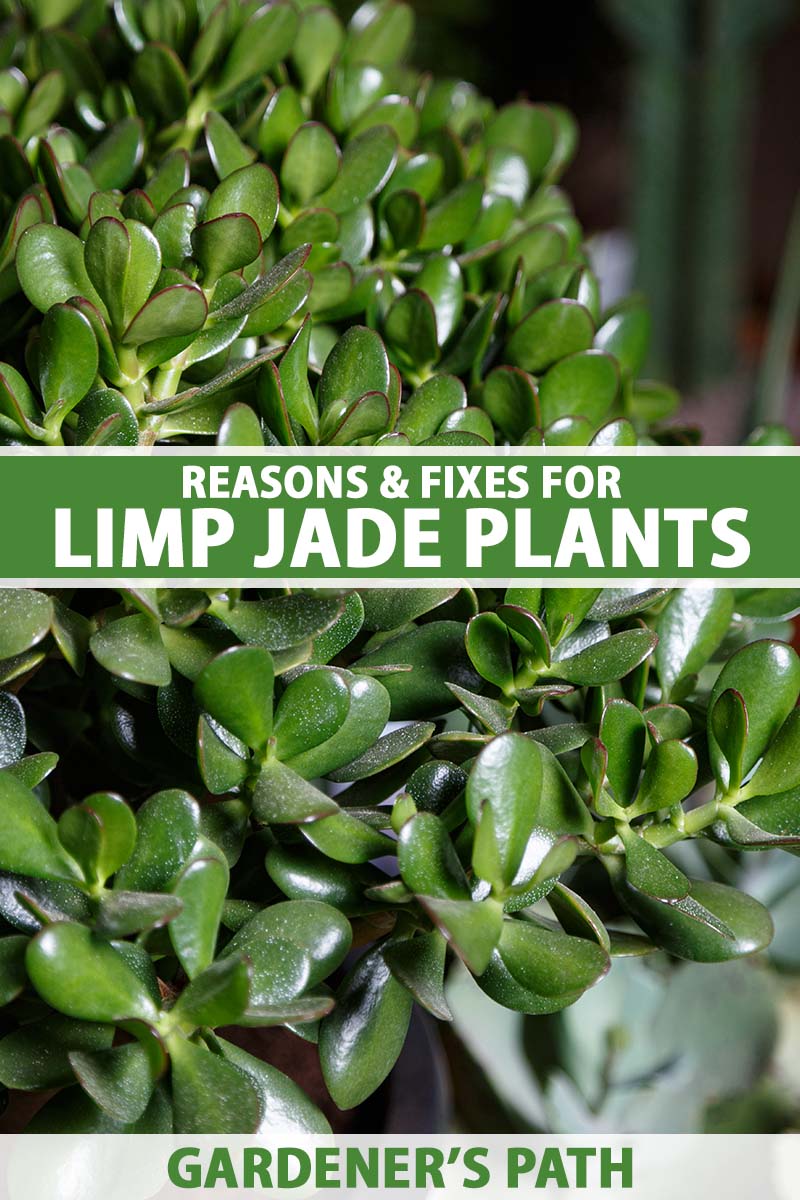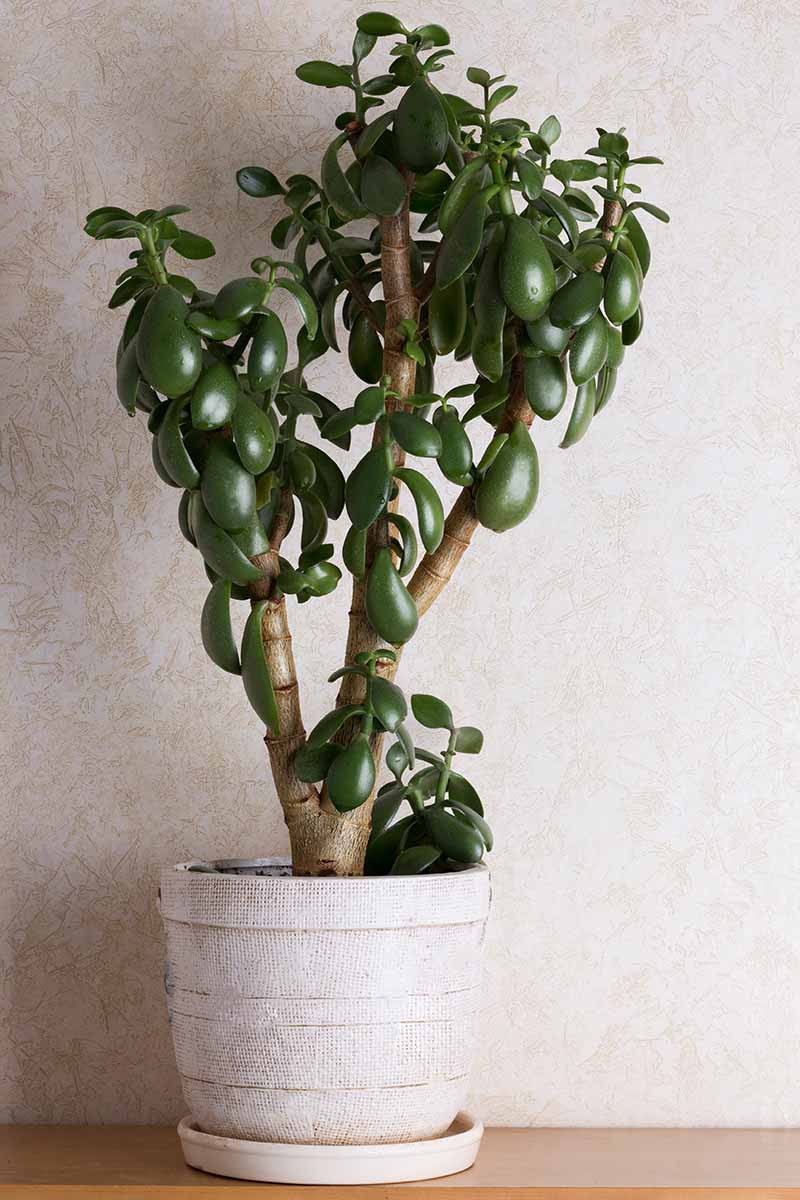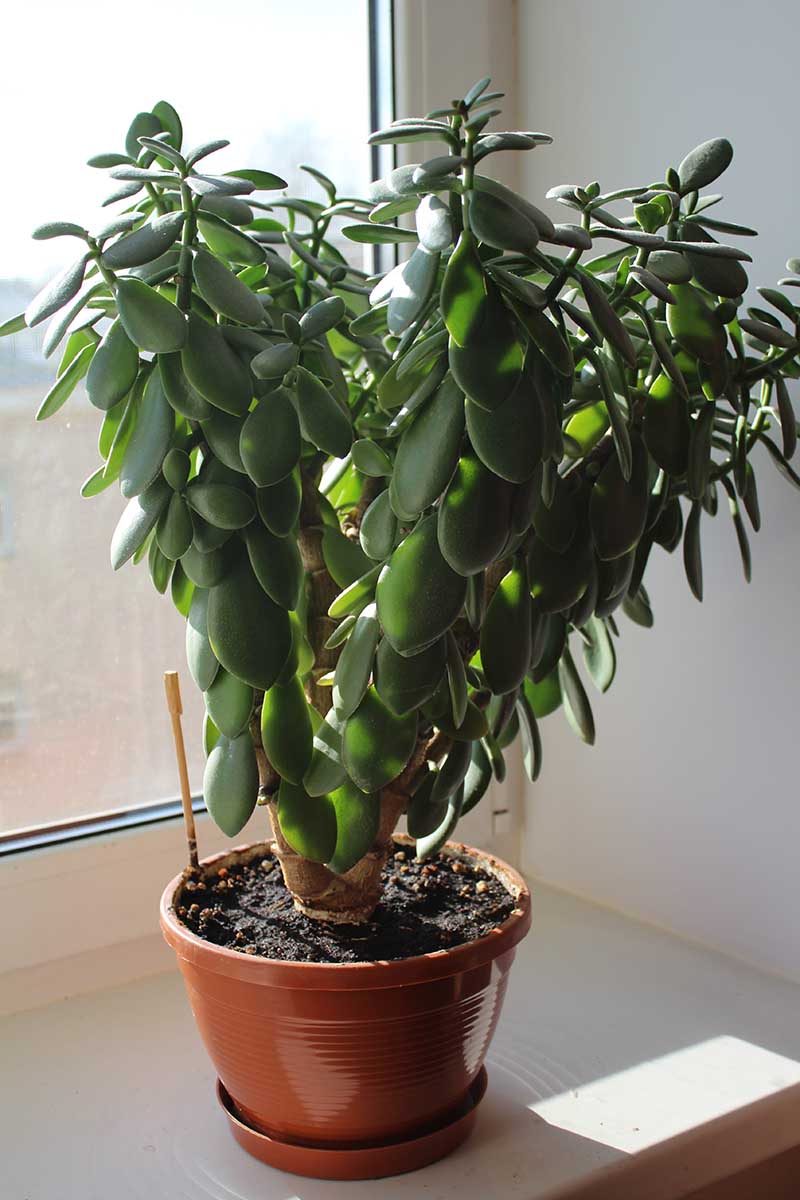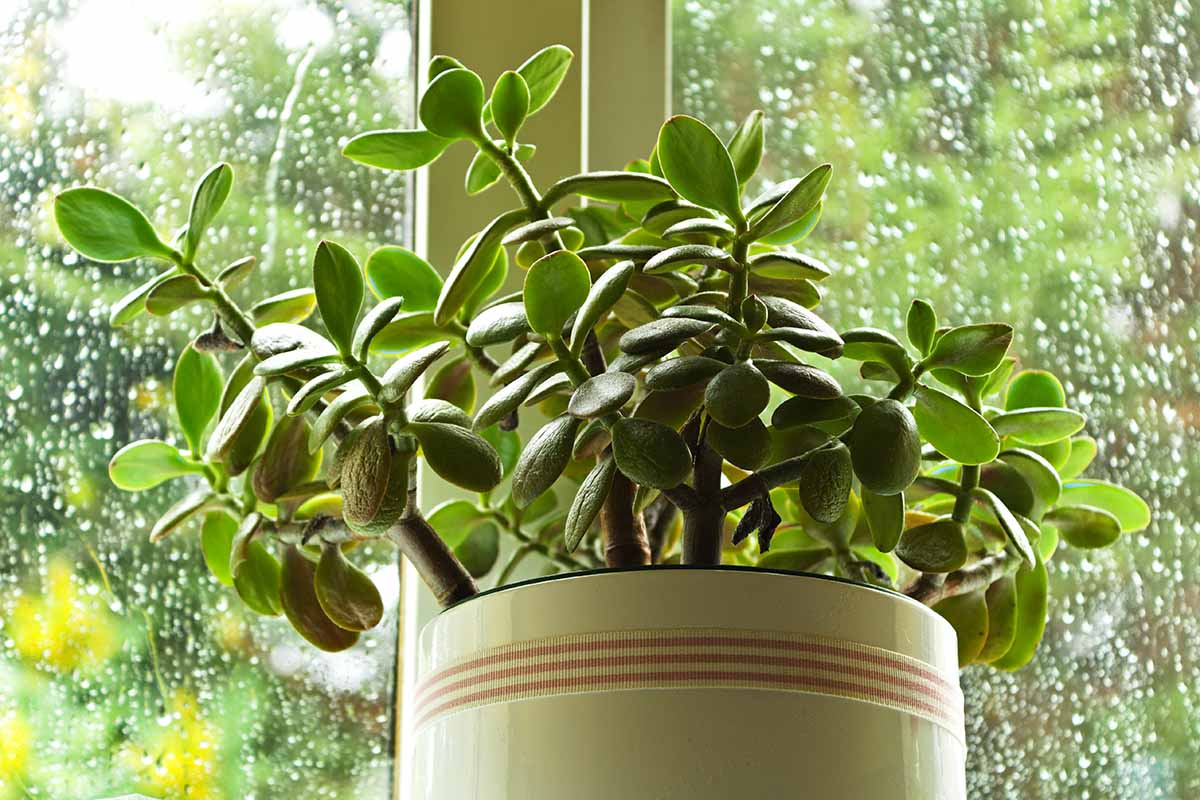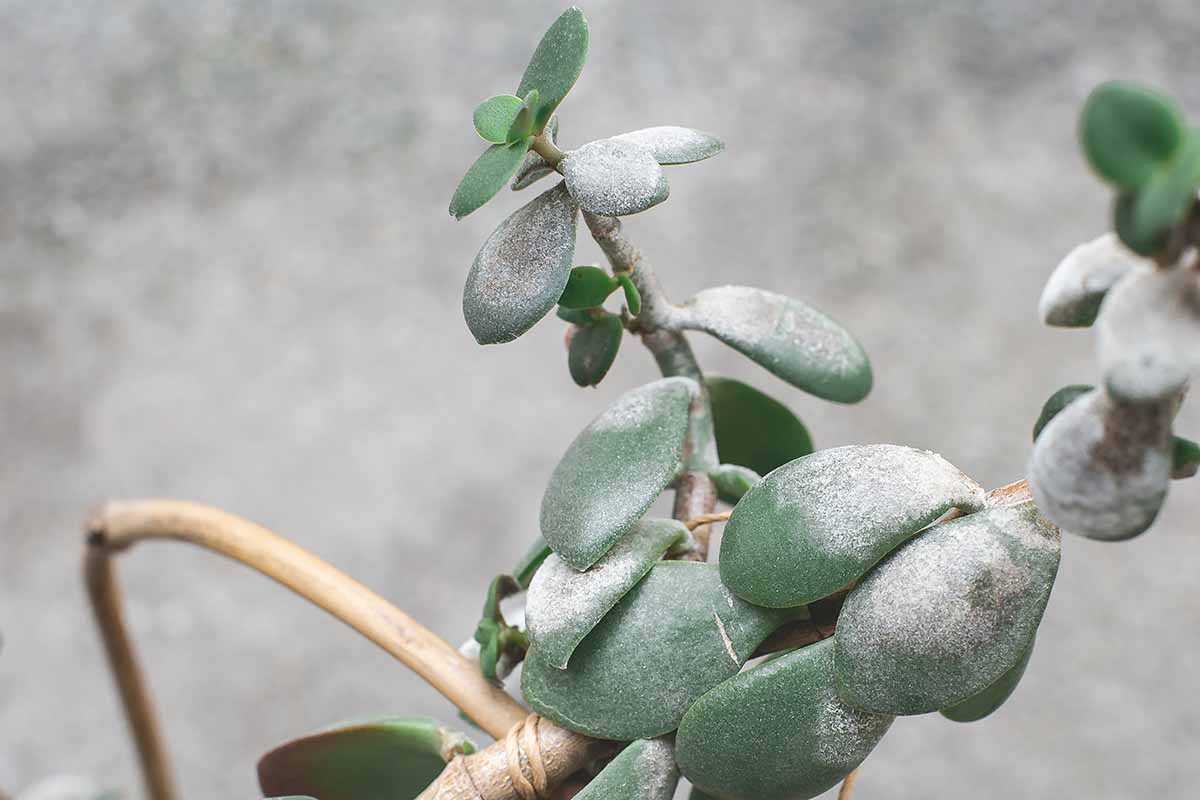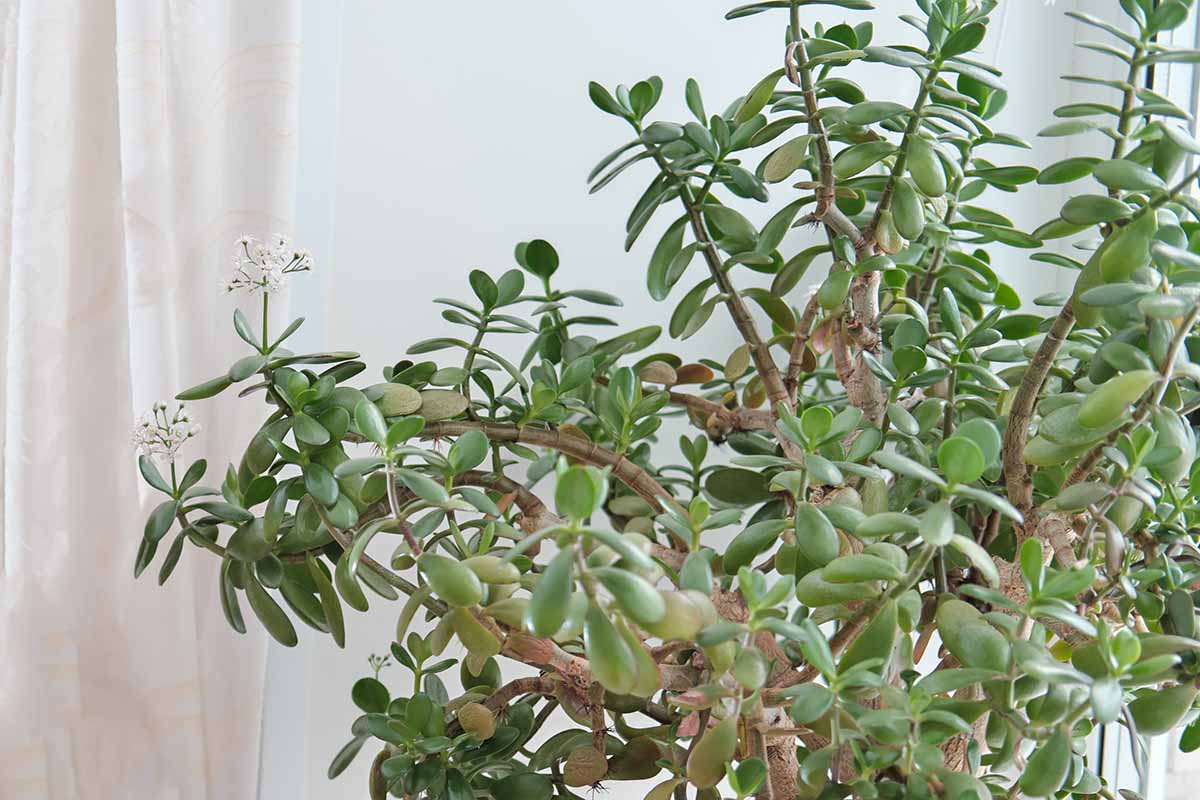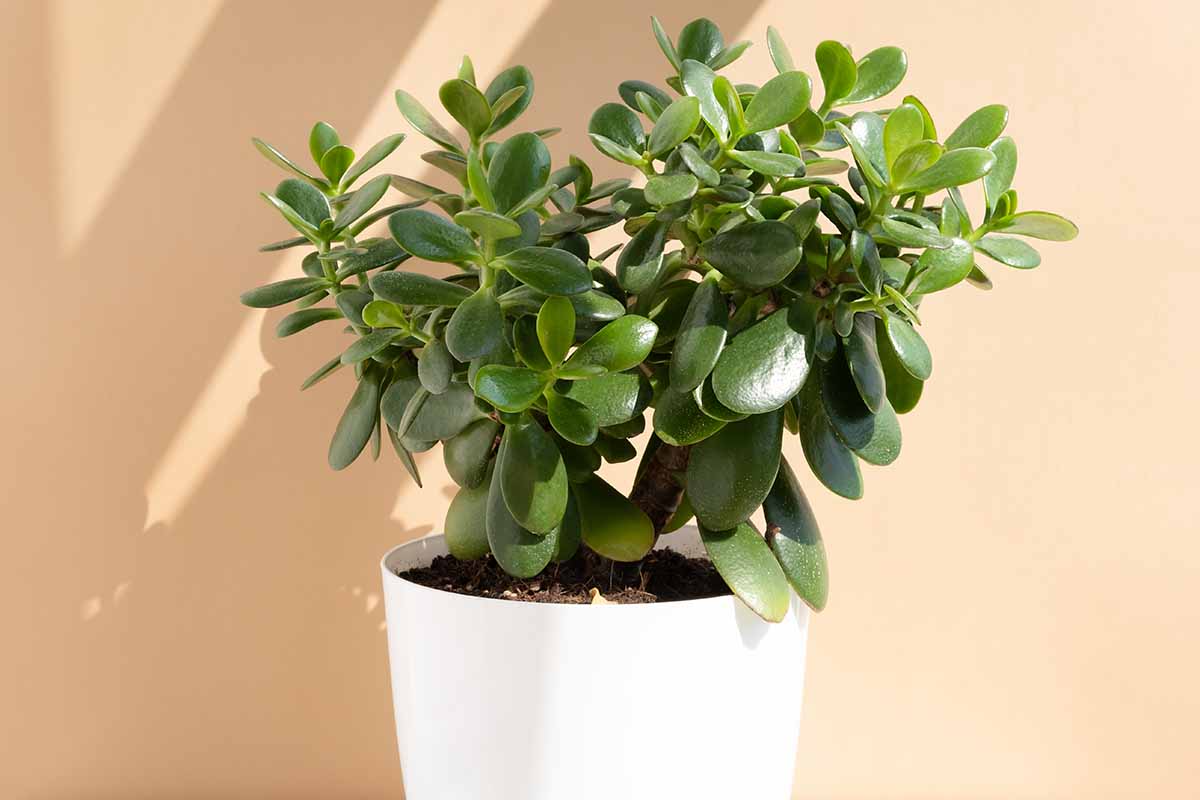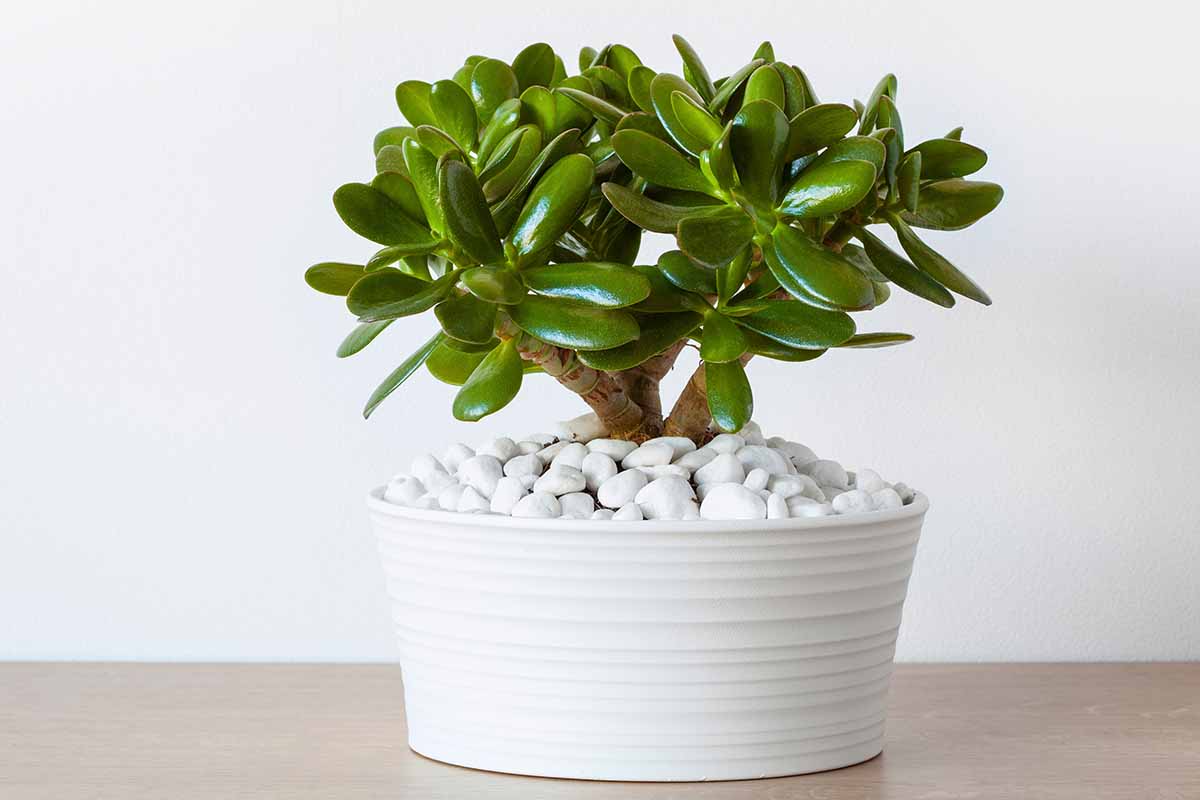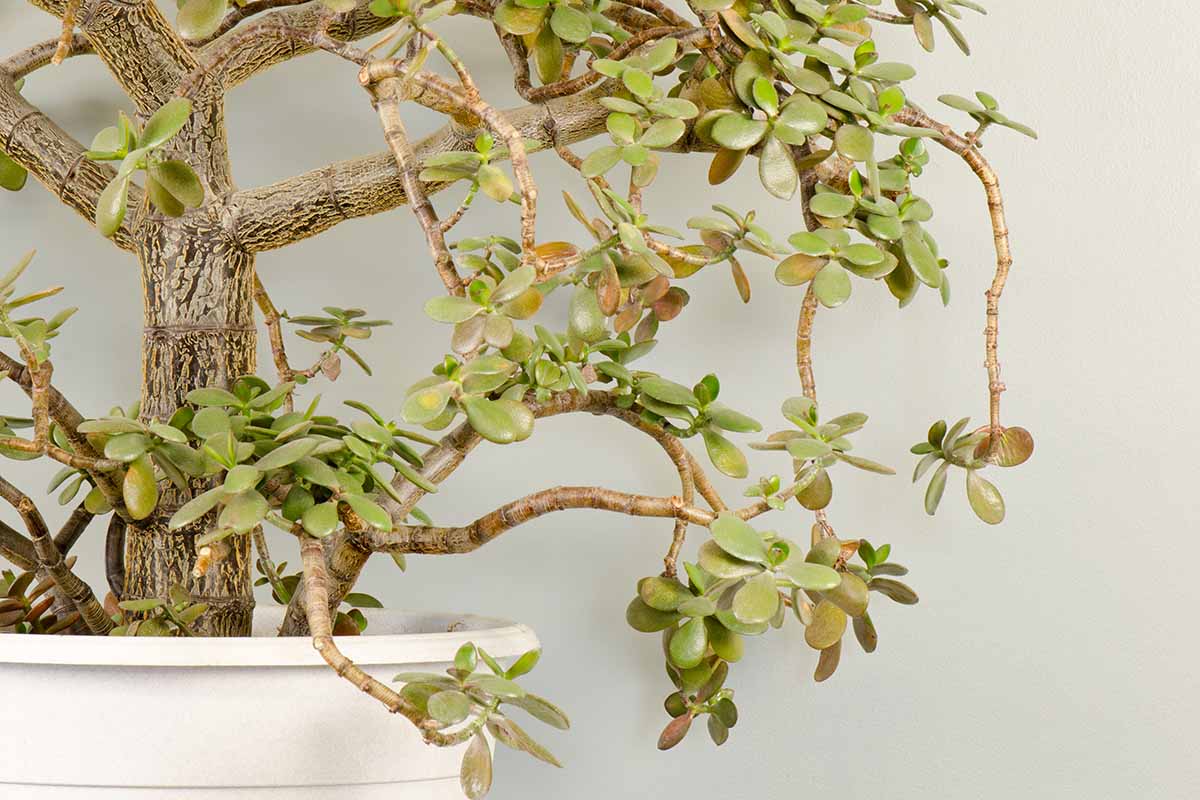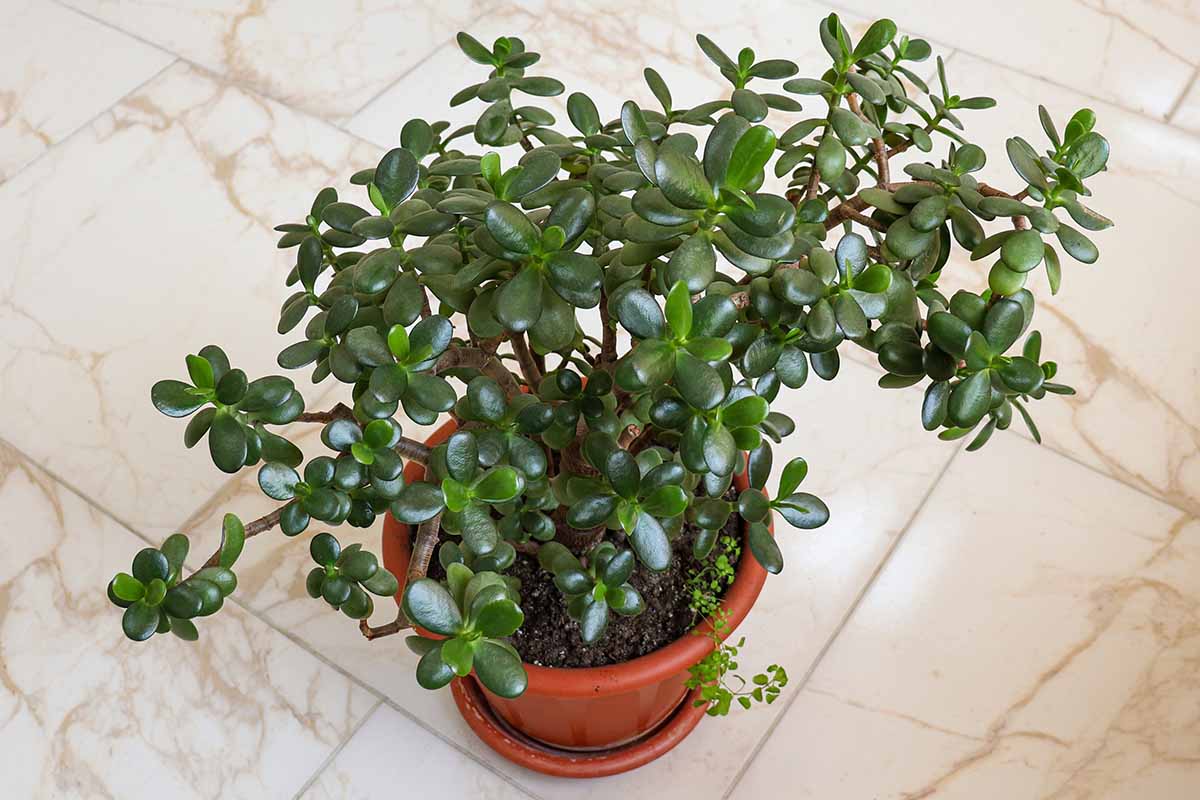Long-lived, water-wise, and low maintenance, it’s no wonder this South African succulent is prized as a garden specimen in Zones 11 and 12, and as a houseplant everywhere. We link to vendors to help you find relevant products. If you buy from one of our links, we may earn a commission. Learn more about cultivating jade as a houseplant in our guide. This article discusses 11 common causes of limp leaves and stems, and how to avoid them. Here’s what we’ll cover: If your formerly perky plant begins to sag, you’ll need to do some detective work to find out why. And while the cause may be evident if it’s been a long time since you remembered to water, there may be other factors causing distress. Let’s dive in and get this problem solved! Consider the following:
3. Inadequate Drainage
As mentioned above, good drainage is essential. When excess water fails to drain away, roots become oversaturated and unable to take up water and nutrients. To keep foliage dust-free, use a feather duster, clean dustrag, or leaf-shining product. Miracle-Gro Leaf Shine is a spray liquid that helps to remove dust and restores luster. It’s a water-based product that contains mineral oil. Spray and gently wipe it off with a soft, clean cloth. Miracle-Gro Leaf Shine
2. High Humidity
As a native of the Eastern Cape of South Africa, where the ambient moisture typically ranges from approximately 40 to 80 percent, jade is tolerant of a range of indoor humidity levels. However, when the moisture in the air is excessive, leaves may hang limply. And when there is excess humidity plus a poorly draining pot, low light, and minimal air circulation, drooping may precede rotting, as the roots may be oversaturated as well. ThermoPro Digital Hygrometer This device measures temperature as well as humidity. Use a pot with a drainage hole, a houseplant-adapted watering can, and always be sure to water the soil, not the foliage. And finally, allow ample room for airflow between houseplants to prevent their collective moisture evaporation from raising the ambient humidity too much. When you see limp leaves and floppy stems, this can be an indication of root rot, and the damage may be irreparable. In addition to one or more drainage holes, a porous pot like one made from unglazed clay or terra cotta allows moisture to evaporate more quickly and readily than a non-porous one, and helps to prevent oversaturation. Upgrade to a well-draining, unglazed pot to support your plant’s health and keep it looking its best. And if your plant is in a decorative container without a drainage hole, use this as a cachepot instead, and move the plant and soil to a nursery pot with drainage that can fit inside. If pots are placed on saucers, always be sure to quickly empty out any water they collect.
4. Inappropriate Sun Exposure
Another factor to consider when examining limp foliage is sun exposure. Outdoors, jade needs full sun. Indoors, bright, indirect sunlight is best. The leaves may take on a red tinge or begin to droop in direct sunlight, such as on the sill of a south-facing window. With prolonged overexposure and inadequate moisture, drooping may advance to wilting, desiccation, browning, and leaf drop. Conversely, if there is not enough light, the leaves may be a rich dark green, but they may hang limply. And while the plants may survive this way, they are not thriving. Jade grown in low light does not look the same as a perky-leafed specimen with lighter, firm, red-tinged foliage. In addition, stems are likely to elongate or become leggy in locations with poor lighting, as they stretch toward any available light. They are more likely to flop over than stems with adequate sun exposure. Provide a location with bright, indirect sunlight, or supplement with a grow lamp. Keep the pot between three and five feet from the window. Rotate the pot a quarter turn every few days to ensure that all foliage receives adequate sun exposure.
5. Moisture Stress
Sometimes, even with the best intentions, we may under- or overwater and cause our plants distress. It’s best to wait until a pot completely dries out before watering a jade plant. Then, thoroughly saturate it with a deep watering and drain the excess. Factors that contribute to oversaturation are:
Poor drainageWatering before the pot is completely dryDim lightWatering during winter dormancy when water needs decrease
When soggy soil impairs root functioning, leaf limpness begins at the bottom and works its way up. As the wetness progresses to rotting, the leaves may turn yellow before falling off. Underwatering may also cause limpness. Improper watering techniques are likely causes, such as shallow watering and failing to water when the pot dries out. Dryness from a lack of water may be exacerbated by excess sun exposure. When evaluating this cause for drooping, know that as jade ages, the stems grow woody and the lower leaves drop off, leaving a brown line we call a leaf scar behind. It is no cause for alarm. Avoid moisture stress with a well-draining pot, use a moisture meter to check the potting medium, provide adequate sunlight, and reduce watering during dormancy.
6. Over-Fertilizing
As we mentioned, stems may become leggy when foliage receives inadequate sun exposure. But another reason for elongated stems with sparse foliage is too much fertilizer. Jade is what we call a light feeder. Too much food, especially a product with a heavy nitrogen content, or the first number in the NPK nutrient ratio that you might see on fertilizer packaging, is likely to result in accelerated growth and tall stems that may flop over. If you choose to fertilize, do so once during the growing season, which extends from spring through summer. Withhold food during fall and winter.
7. Pests and Disease
While jade is not prone to pests or diseases, these plants may sometimes fall victim to sapsucking pests like aphids, mealybugs, scale, or spider mites. A houseplant in overly dry conditions is more susceptible. Some insects, particularly aphids, are also vectors of disease. Infested foliage may droop as sapsucking pests undermine leaf and stem structures, robbing them of the juices that keep them firm. Telltale signs include visible pests, eggs on leaf undersides, sticky honeydew trails, and disfigured foliage. As for disease, powdery mildew may pose a threat, especially under overly wet conditions. It coats foliage with furry grayish spores and black fruiting bodies, inhibits photosynthesis, and leads to limpness and leaf drop. When the roots are densely bound, two stressful conditions may occur:
Avoiding moisture stress caused by both under- and overwatering.Maintaining an appropriate humidity level.Spacing pots generously to avoid raising the ambient humidity.Examining foliage regularly for signs of insects and disease.In addition, you can periodically treat your indoor plants with neem oil.
Neem oil is a natural fungicide, miticide, and pesticide made from the oil found in neem tree seeds. Bonide’s neem oil is ready to spray as needed, either preventatively or to treat an active infestation or infection. Bonide Neem Oil Bonide Neem Oil is available from Arbico Organics in quart- and gallon-sized containers.
8. Root Bound Plants
With a slow-growing species like jade, it may take years to outgrow its pot. You’ll see roots poking out from the drainage hole(s) when it does. When you unpot, you’ll likely see roots swirled round and round with little to no visible soil. We refer to plants in this condition as root bound or pot bound.
Poor nutrient and water uptake.A clogged drainage hole and oversaturation.
Both are likely to cause foliage to become limp and yellow. A pot should allow room to grow to avoid a root bound situation. The general rule of thumb here is to allow one to two inches of space between a plant and the pot rim. This guideline works well when the foliage is bushy right down to the soil. However, if you are growing jade that has matured to look like a tree with a trunk, you’ll want to choose a pot diameter one to two inches wider than the leafy canopy. Not only are these proportions aesthetically pleasing, they aid in stability. When repotting a root bound jade, use pruners to cut into the bottom roots to break them up. Then flay the roots outward. You can remove up to one-third of the root bound bottom to promote better root function going forward.
9. Temperature Stress
Per Amanda Schlecht of the North Dakota State University of Agriculture, jade does best with daytime temperatures of 65 to 75°F and nighttime temps of 50 to 55°F. A plant grown in a bright location is better able to handle higher heat than one grown in a darker placement. When a pot is in a draft, a room that’s too hot, too cold, or with temperature fluctuations, it may respond with behaviors like leaf drooping or dropping. And while it may do very well near a south-facing window, if it sits right on the sill in front of the glass, both summer heat and winter cold can cause distress. Also, we’ve recommended a porous pot because it helps to evaporate excess moisture. It also helps regulate temperature, as moisture and air move through it. If you were to grow jade in a metal container or a material with a dark color, although decorative, it could raise the soil temperature and cause distress, especially if it’s too close to a sunny window. To prevent temperature-related limpness, try to maintain consistent temperatures by placing pots out of drafts, three to five feet from windows, and in pots that breathe.
10. Top-Heavy Plants
As mentioned above, too much nitrogen-rich fertilizer may cause leggy stems that flop over. Without pruning, they continue to grow bent over, becoming woody with age. As the lower leaves fall off, the upper tip foliage becomes top-heavy, causing the leaves to droop even more. And while this may be an accidental occurrence when leggy stems are not pruned, it can also contribute to aesthetics as a deliberate work of art in the bonsai tradition. Similarly, some folks grow jade as a tree with a single woody trunk. If the foliage on top becomes too heavy for the trunk, the entire plant may begin to lean. As it uproots itself from the soil, the roots may sever, depriving the leaves of food and water, and causing them to become limp. By pruning an older C. ovata, you can take the excess weight off the main stem or stems to keep it upright and able to transmit food and water to the foliage above.
11. Transplant Shock
Finally, flora may appear limp and lifeless soon after being transplanted into a new pot. Just like moving house is stressful for people, disturbing roots causes temporary shock and a growth slowdown. Fortunately, a resilient species like jade is likely to rebound with vigor. To ease the transition from an old container to a new one, transplant potted jade in early spring during active growth. Here’s how: Wait until the pot needs water. Then saturate it and let it drain thoroughly. Wait three to five days to transplant it to the new pot, or it may be too wet to lift out. Transplant and place the new pot in bright, indirect sunlight. Water when the soil dries out completely. If you choose to fertilize, wait until summertime to avoid damaging tender new roots. Although C. ovata grows slowly, you’ll find it to be resilient. And while it may take time, you’ll know your restorative efforts are working when the foliage perks up again. Have you dealt with a droopy jade plant? Please tell us about your experience in the comments section below, and let us know if you have any questions we can help with. If you found this article informative and want to learn more about gardening with succulents like jade, we recommend reading the following guides next:
9 Reasons to Prune a Jade Houseplant and How to Do ItHow to Propagate Jade PlantsHow to Grow and Care for Crassula Succulents
